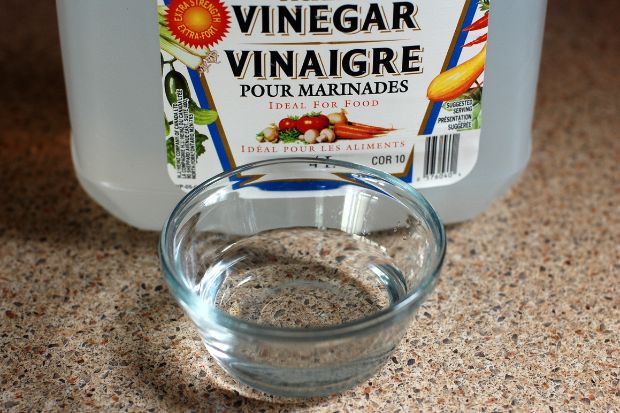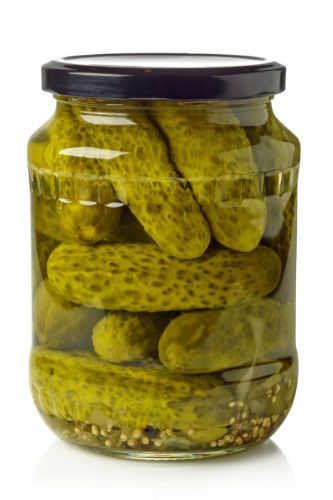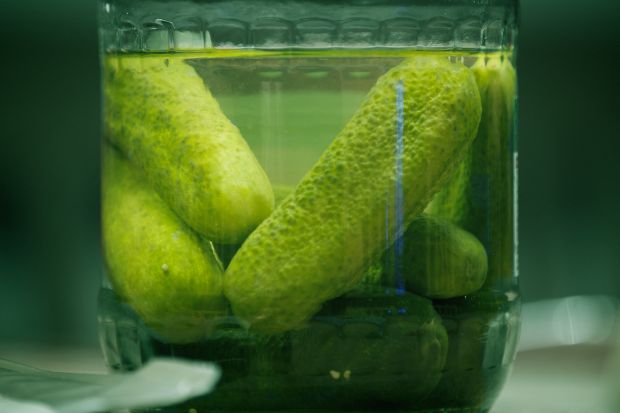People usually pickle foods either to give them a sour or savory taste or to preserve the foods. The process of pickling something is simple enough, but many people wonder whether it’s OK to pickle in a plastic container.
You can pickle in plastic containers. If you’re going to do this, you have to use the “quick pickle” method that doesn’t use any boiling water. This is because boiling water could melt the plastic that makes up the containers for pickling.
What Is Pickling?

Pickling veggies involves leaving the vegetables in some type of acidic solution in order to preserve them or change their taste. More often than not, glass jars are used to pickle vegetables, but you can use some type of plastic container if you wish. As long as you follow the right protocol, you don’t have to worry about using vinegar as the solution because vinegar will not break down your plastic container.
This said, if you’re going to use a plastic container to pickle something, you need to take certain precautions so chemicals and bacteria don’t get into the final product, which could possibly harm anyone who eats the vegetables.
Before we get into specifics, let’s discuss the two main types of pickling: direct and indirect.
Direct Pickling
With direct pickling, there is no fermentation required. You will still need some type of solution that has acid in it, but the fermentation process isn’t necessary. There are two main types of direct pickling.

Quick Pickling
When you quick pickle veggies, you submerge them in a solution that is usually mostly vinegar, which preserves the food by killing the bacteria. The vinegar solution soaks through the skin of the produce and gives it a little flavor as well. With quick pickling, long-term storage is not necessary, but the food does require refrigeration afterward.
Canning
Canning requires that you boil water and place it in the jar numerous times, which kills the bacteria present in the food. With canning, you store the food at room temperature for long periods of time before it is ready to eat. This is a very popular form of pickling food.
Indirect Pickling
With indirect pickling, the food ferments on its own without any type of acidic ingredient. For this method, it is important that the pickling container be something other than plastic. This is because if you use this method with a plastic container, the air and heat will go in and out of the container, and this directly affects the fermentation process.
As you can see, when it comes to the pickling process, the only one that makes sense when you use plastic containers is the direct pickling method of quick pickling. If you use the other methods, there’s always the possibility that the plastic container will melt or create a situation in which the food inside of the container is harmful to those who eat it.
Can You Use Any Plastic Container for Pickling?

If you’re going to pickle foods and you prefer using a plastic container, you can’t just rush out and buy any type of plastic container on the market. Instead, it has to be a specific type of plastic container. When looking for these containers, make sure they have the following features:
They Must Be Sealable
The right pickling container has to be completely sealable. If it is, bacteria won’t be able to get to your food, and the flavor and pickling solution won’t be able to get out. Try to find a container that has a lid with some type of threading on it for the best results.
They Must Be Food Safe
Food-safe plastic containers offer two features. First, that particular container has never before contained any toxic chemicals. Second, the container is designed to prevent the breakdown and release of dangerous particles in your food.
They Must Be a Certain Shape
In addition to being food-safe and sealable, the plastic container you intend to use for pickling should be vertical, with a square or cylindrical footprint. Why? Because with these shapes, the containers will be able to hold plenty of vegetables while limiting their contact with air at the top of the container.

Tips for Making Sure the Pickling Procedure Is Safe When Using a Plastic Container
To make sure your pickled foods are safe to eat in the future, follow these safe pickling tips:
Store the Produce at the Proper Temperature
Always store your pickled vegetables in temperatures between 35 and 40 F, which means putting them in the refrigerator.
Blanch or Boil the Produce First
Bring some salted water to a boil, then boil the produce for a few minutes. This way, any bacteria that is still present will be killed before you place the food in your plastic container.
Always Use the Right Type of Vinegar
Use a minimum of 5% acidic vinegar when pickling the produce with the quick pickle method.
Finally, you should always salt the produce properly according to the instructions in the recipe. It should always be a quick pickle recipe and it must always be followed to the letter if you want to pickle your veggies in a plastic container.
